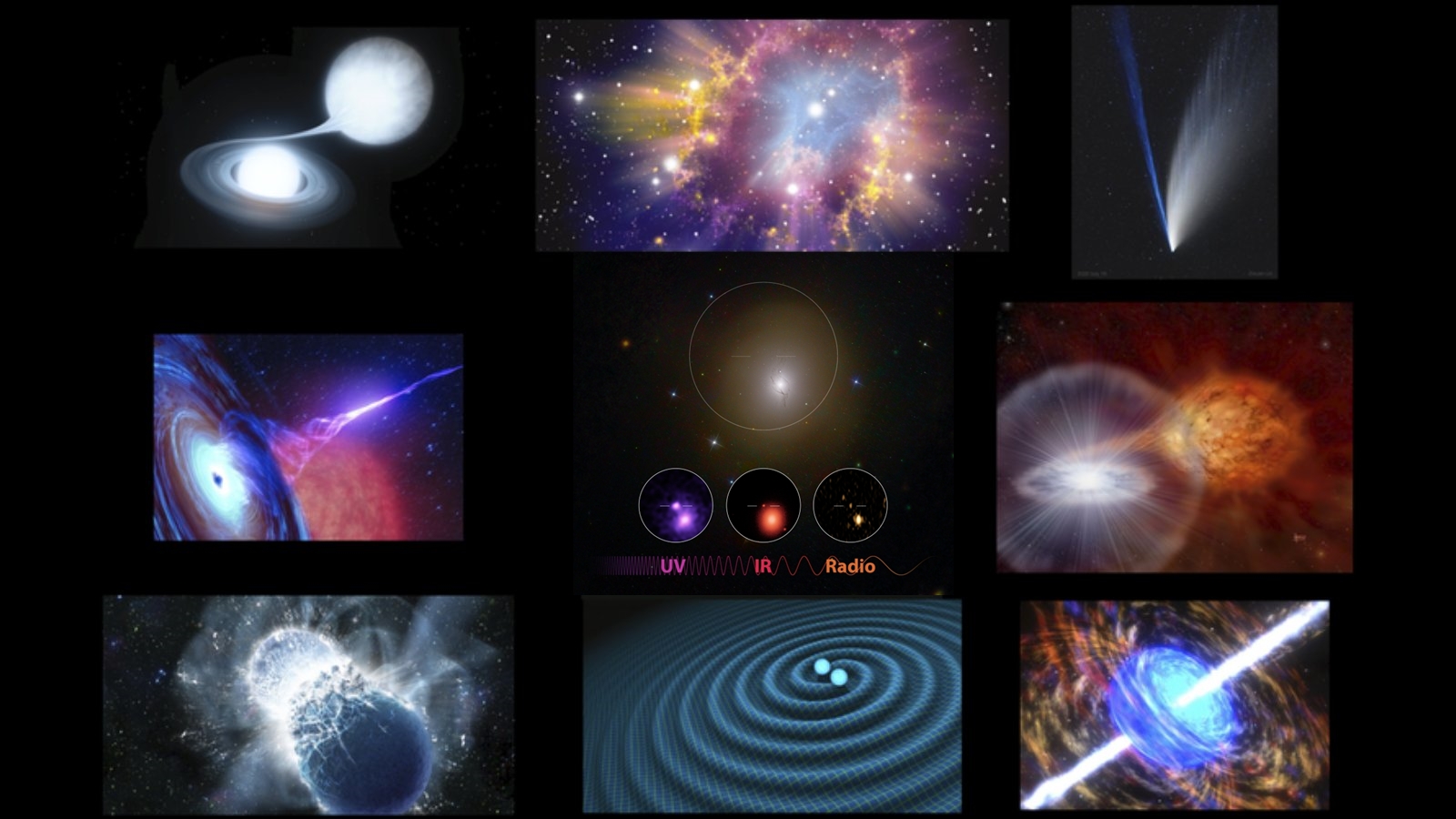
The detection of neutrinos and gravitational waves (GW) from astrophysical sources opened new windows to the Universe. By combining electromagnetic and multi-messenger (GW or neutrino) data, we are able to understand some catastrophic phenomena in unprecedented ways. Multi-messenger sources are typically coarsely localized, so even if we know precisely when a GW or neutrino event occurs, it is usually challenging to identify where the source is placed in the sky.
With its large field of view and state-of-art real-time analysis pipelines, the Zwicky Transient Facility is an excellent instrument to discover the electromagnetic counterparts to GW and neutrino events. When such external triggers are received, members of our ZTF group promptly schedule optimized target of opportunity observations in order unveil the associated optical transient. If a bright counterpart to a multi-messenger source exists, ZTF can pin-point its coordinates and provide important initial photometric data. The location of newly discovered counterpart candidates is promptly shared with the rest of the astronomical community. The most promising transient candidates are then followed up spectroscopically and photometrically with large telescopes, including the Gemini and Keck observatories, and are characterized at many different wavelengths with radio, infrared, UV, and X-ray observations. When such information is pulled together and studied along with the GW or neutrino data, we can better understand the nature of rare astrophysical phenomena, the mechanisms at the origin of the detected multi-messenger signals, and probe extreme physics in regimes impossible to replicate on Earth.
Latest Publications
-
Candidate Tidal Disruption Event AT2019fdr Coincident with a High-Energy Neutrino
Simeon Reusch et al.
Date: 06-2022 -
Inferring Kilonova Population Properties with a Hierarchical Bayesian Framework. I. Nondetection Methodology and Single-event Analyses
Mohite, S. R., Rajkumar, P., Anand, S, et al
Date: 01-2022 -
Fast-transient Searches in Real Time with ZTFReST: Identification of Three Optically Discovered Gamma-Ray Burst Afterglows and New Constraints on the Kilonova Rate
Igor Andreoni, Michael W. Coughlin, Erik C. Kool, Mansi M. Kasliwal
Date: 09-2021
